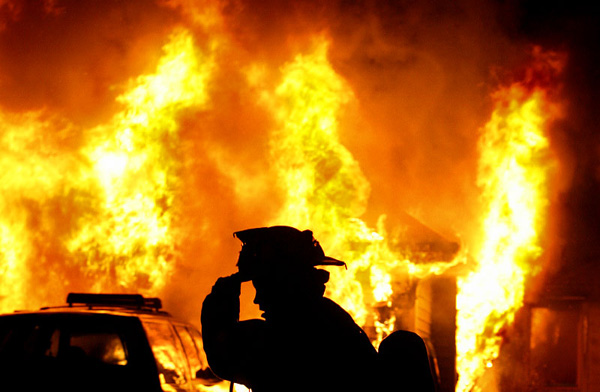Who doesn’t love a cozy fire when the temps outside are bitter? But we have to keep it confined to the fireplace. The U.S. Fire Administration reports that wintertime residential building fires result in approximately 945 deaths and 3,845 injuries each year, along with an estimated $1.7 billion in property damage.
Why is this?
Often we close our homes up for the winter and can potentially leave behind unsafe situations when we do. We take great pains to winterize our homes and prevent pipe damage, and then leave cleaning rags in close proximity to chemicals that can spontaneously ignite them.
Obviously, we’re cooking indoors more, and using our fireplaces and heaters more. And let’s not forget the holiday decorations, which are often accompanied by rats’ nests of electrical wires or burning candles.
The potential for a home fire is significant this time of year.
There’s a lot you can do to keep your home fire-safe all winter long. Although most of it is common sense, easily preventable tragedies do occur still for some reason, so it’s best to review it all once again.
Extension cords: Try not to use them if you can avoid it. But if you do, be sure they’re of the proper wire size for the item being plugged into it, and don’t ever exceed that. If what you’re plugging into the extension cord has a grounded plug, then the extension cord needs to have a grounded plug also. Don’t ever alter or defeat the grounding leg on the cord. Don’t put cords in front of fireplaces, heaters or cooking appliances, and don’t drape them where they can fall down onto something hot.
Candles: Candles have a dangerous open flame, so be careful where you set them. A candle on a window sill can set a curtain on fire if a breeze pushes the curtain over the flame. Candles can ignite paperwork or books on shelves, or other nearby flammables. Always burn candles on a candle holder, not directly on a flammable surface. Jar candles are safer since the flame is contained, and the lid will completely snuff out the flame. And of course, it probably goes without saying that you must be sure to extinguish your burning candles before leaving the house or heading off to bed.
Hot ashes: Fireplace ashes are hot surprisingly long after the fire has gone out. If you’re going to clean out your fireplace, never put the ashes in a paper bag, cardboard box, or plastic garbage can. Put ashes only in a metal can with an airtight lid that’s approved for that use.
Space heaters: Be very careful with the use and placement of space heaters. Never point a space heater directly at anything flammable, such as a pile of newspapers or clothing. Never use a space heater with a worn cord, a missing safety guard, or a model that lacks a safety shutoff that automatically shuts the unit off if it gets tipped over.
Combustible materials: Having a stack of newspaper near the fireplace for starting the fire is an accident waiting to happen. Store your newspapers, kindling, and firewood a safe distance away from the fireplace. The same goes for other combustibles, such as clothing, dog beds, etc. If you have wall heaters, never allow clothing, cardboard boxes, newspapers or other combustibles to build up in front of them.
Leaves and needles: Don’t let dry leaves and needles build up on your roof, especially a wood roof. Make sure the spark arrestor on your chimney is in place as well.

